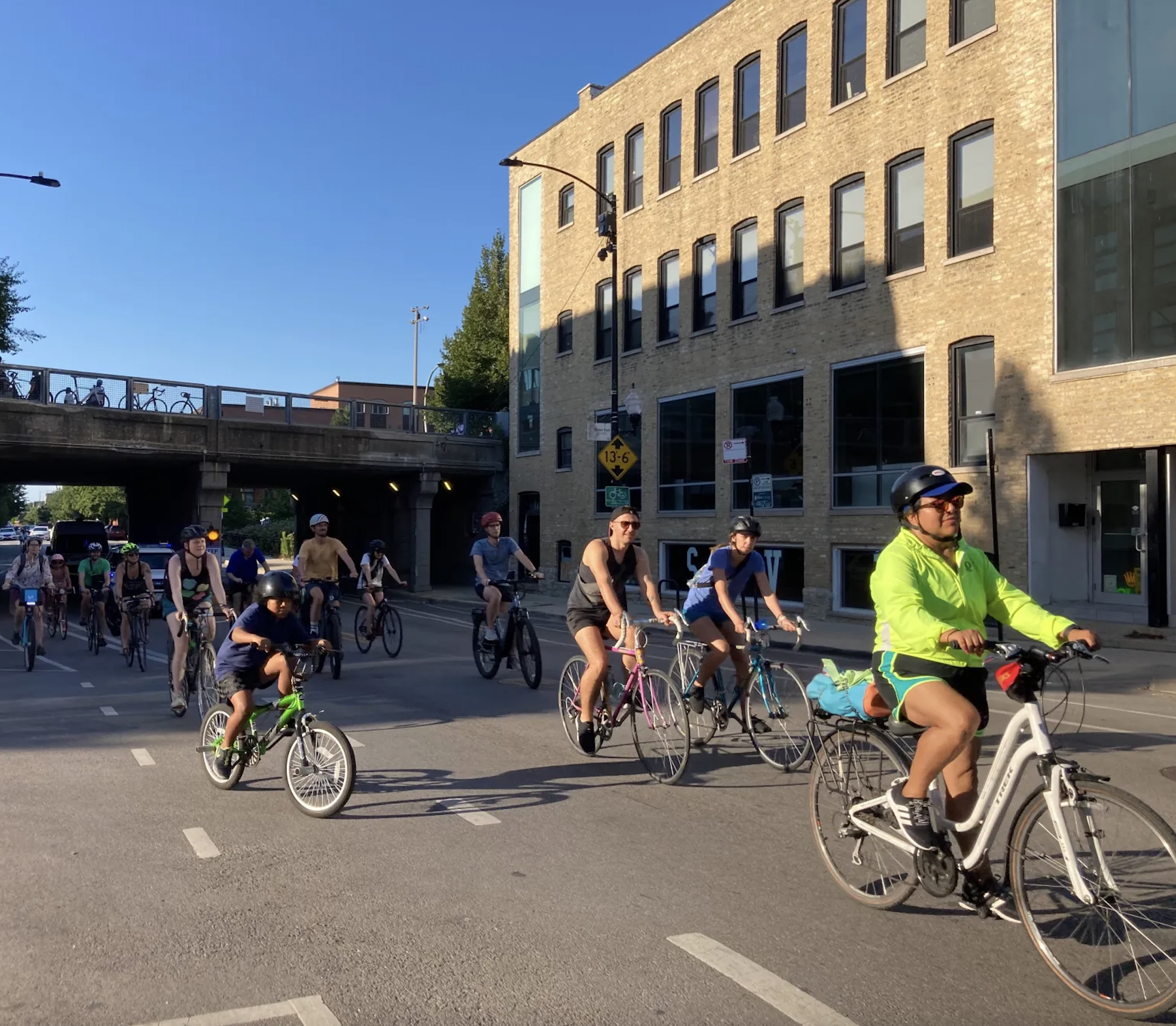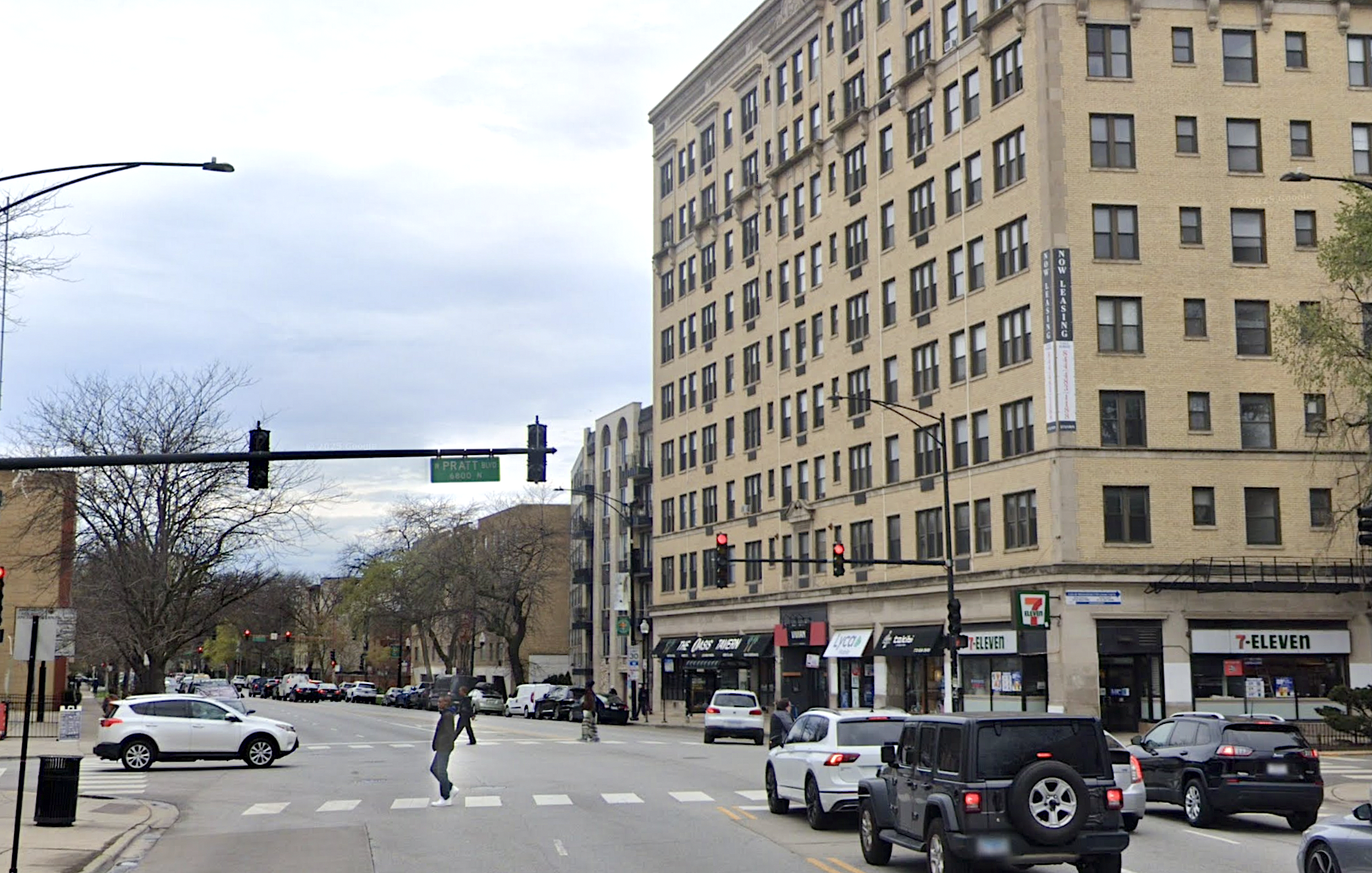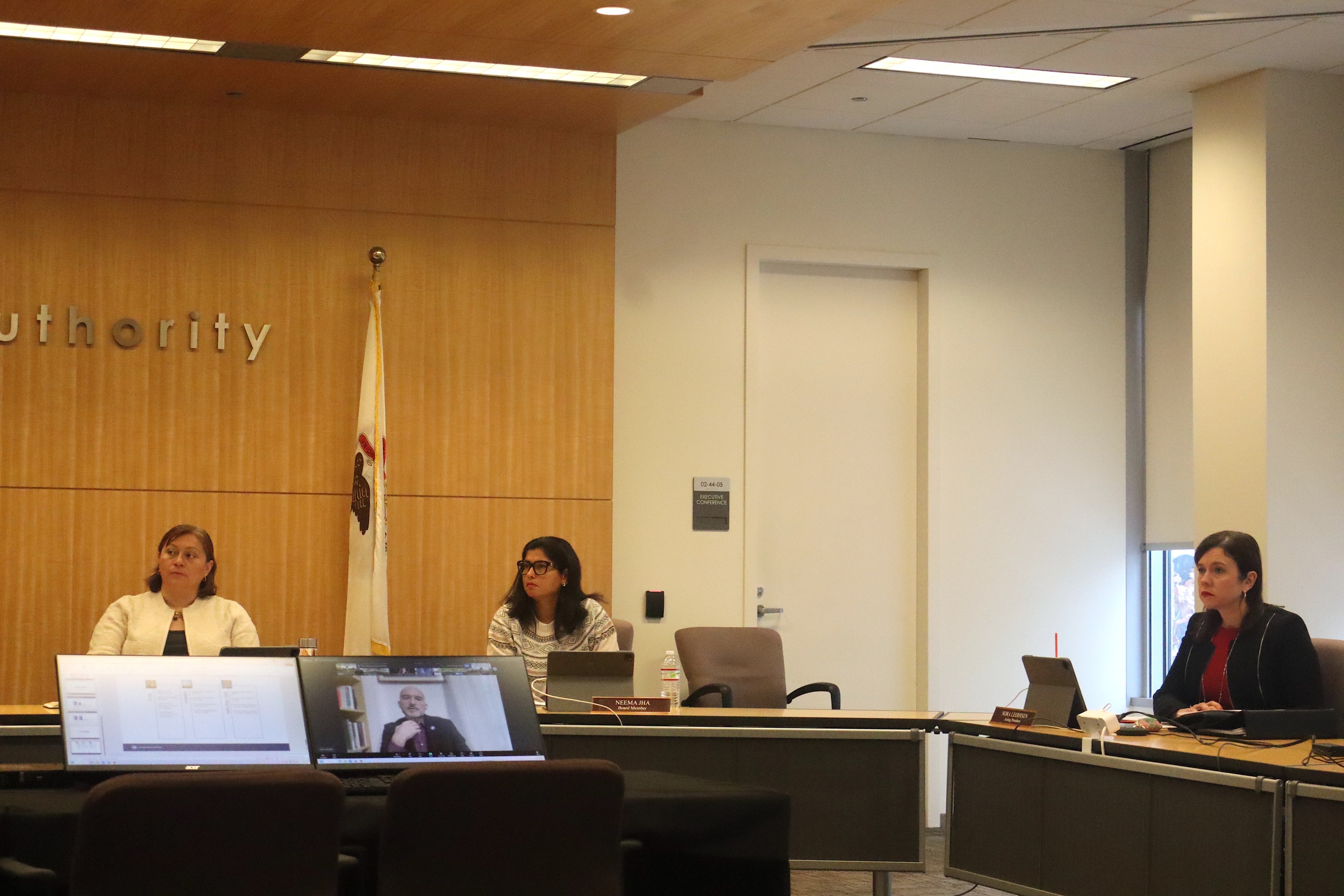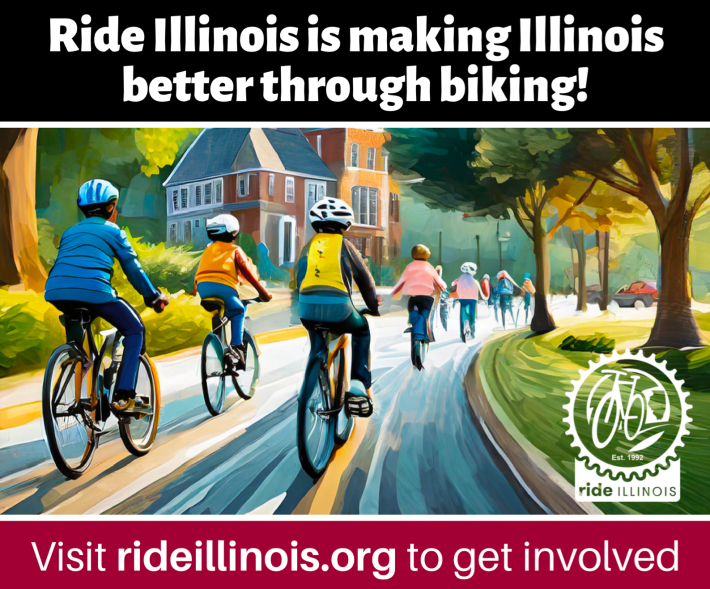
Last week, the grassroots advocacy group Chicago, Bike Grid Now! held "Let's Get a Bike Grid: A Community Organizer Training," an online discussion of the work they doing to push for bike/ped-priority streets, and how people can help.
Since 2022, CBGN! has been "fighting for the bike grid: 10 percent of Chicago streets prioritized for pedestrians and cyclists, with traffic calming infrastructure and a lower speed limit to keep people safe." That has included Bike Jam demonstrations to highlight the need for more people-friendly streets, Bike Bus commuter rides, and lobbying of local decision-makers. 2025 is the year that the organization hopes to finally make the bike grid a reality.
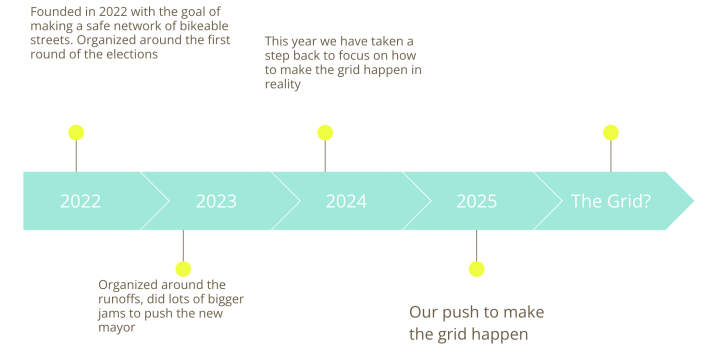
"The bike grid represents our goal to create 450 miles of safer streets in Chicago, which is ten percent of the city’s total streets," the organization stated during last week's presentation. "Our focus is on prioritizing pedestrians and cyclists while eliminating traffic violence. The bike grid roads include lightly-traveled routes such as residential roads and side streets, and feature a significant amount of traffic-calming infrastructure, a reduced speed limit of 10 mph, and limited vehicle access. This approach is not only affordable and easy to put into action, but it also doesn’t require enforcement, making city streets safer for the most vulnerable road users.”
The group argued that making the bike grid a reality would take new legislation mandating that the Chicago Department of Transportation designate the bike grid streets, either a flat number of, say, 450 miles, or ten percent of streets. Any time CDOT resurfaces one of these designated streets, the department would be required to include measures to make the roadway safer for biking. In addition to typical repaving projects like these, CDOT would have a mandate to install a designated quantity of new bike routes, with CBGN! recommending that be 50 miles.
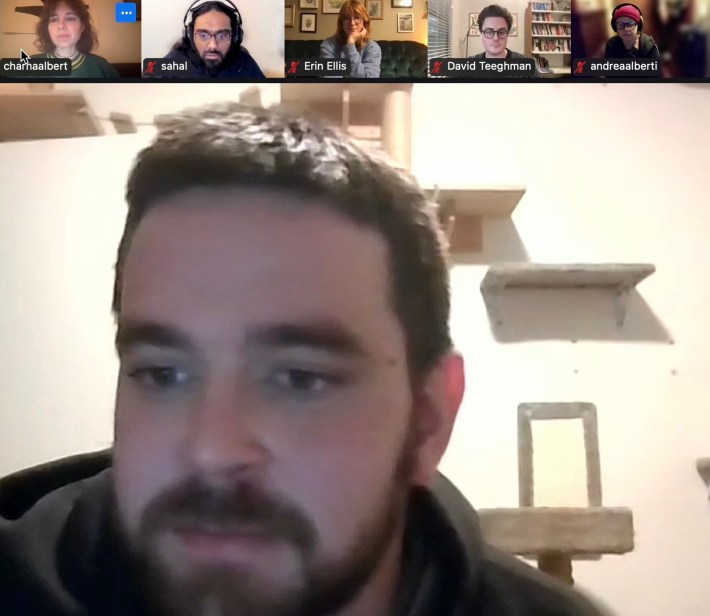
According to the presentation, the next steps include meeting with community groups in areas with key alderman and legislation champions, and touching base with allied organizations to develop a unified message. Then it's necessary to "Hit the ground to get the votes to get it passed!"
Then CBGN! discussed how to tailor the bike grid pitch to make it connect with people with different missions, such as environmentalism and youth programming. "There are lots of important reasons to have a safe network of pedestrian and bike-friendly streets, but the audience determines which reason we want to emphasize!" the bike advocates stated. Here are the pitches discussed in the presentation.
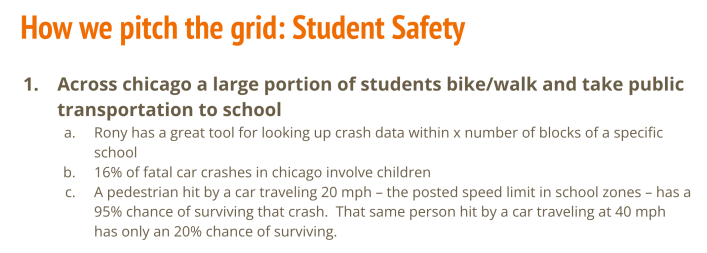
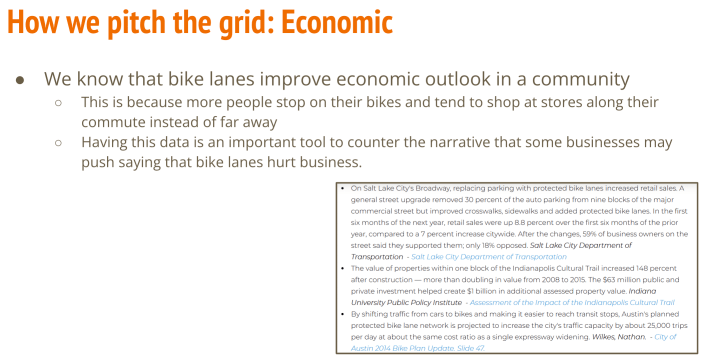
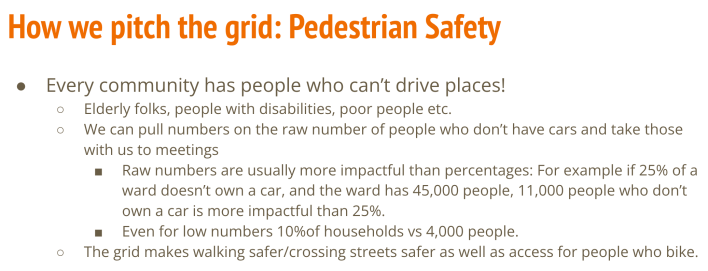
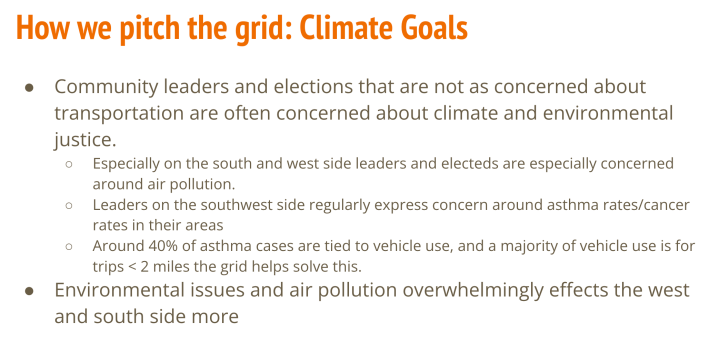
According to the bike grid advocates, the first step in pitching the bike grid is a mix of cold emails and offers to present to advocacy and community groups at meetings, or offering to speak to the board of the organization. "Where possible we want to have these meetings in person as it makes it far better to engage with folks [in real life]," the presentation stations.
Of course, pitching to elected officials is a whole different ball game. CBGN! says that when meeting with politicians, you need to consider what groups they care about, whose opinion they care about, and how hard of an ask it will be. The cycling advocates recommend having non-bike-focused people and organizations present for more potentially challenging meetings with elected officials. These include business leaders, community groups, environmental grounds, and development groups.
As an example of how to do effective outreach to a politician, CBGN! discussed who might be involved in a hypothetical meeting with Ald. Jeylú Gutiérrez (14th) to discuss safe streets issues. Last September, the alder, whose district includes sections of the Gage Park and Archer Heights communities on the Southwest Side, took part in a panel discussion of how to improve conditions on crash-prone Pulaski Road.
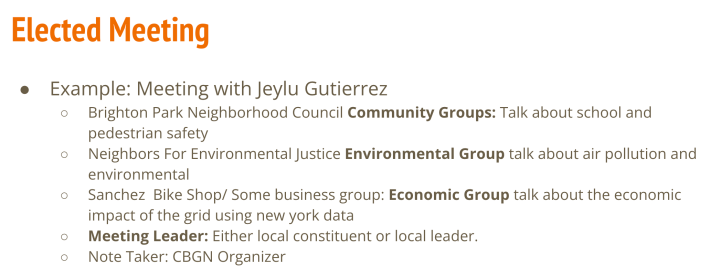
"Electeds often don’t want to hear more from 'bike activists' and it is our job to make sure that electeds feel like the advocacy is coming from the community and their constituents," CBGN! stated.
If you’re interested in joining the campaign for a citywide bike grid, Chicago, Bike Grid Now! can help you get involved. "We are assembling a toolkit for language and answers to common questions we get about the grid if you want to help with this stick around some!"
View the slideshow from last week's "Let's Get a Bike Grid" event here.
If you'd like to get involved with the advocacy group, you can fill out the Chicago, Bike Grid Now! Organizer Interest Form here.
Update 1/12/25, 6:45 PM: This article has been edited to clarify that the meeting with Ald. Jeylú Gutiérrez described in the Chicago, Bike Grid Now! presentation has not actually taken place yet. "That slide about the meeting with Ald. Gutiérrez was intended purely as an example of how to approach an alderperson and what issues to focus on and what groups we might consider bringing in," explained CBGN! member Charna Albert. "We have not yet had this meeting, it was just shared as an example of how to lobby a council member."

Did you appreciate this post? Streetsblog Chicago is currently fundraising to help cover our 2025-26 budget. If you appreciate our reporting and advocacy on local sustainable transportation issues, please consider making a tax-deductible donation here. Thank you!
